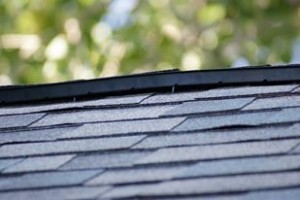The Most Important Aspect of Roofing - Part 2

By Lauren White.
Understanding the value of a balanced attic ventilation system.
In part 1 of this attic ventilation series, we covered the important role that the attic ventilation system plays in the performance of a roof. Part 2 explores why a balanced system that performs properly is vital. In part 3 we explore myths and mistakes.
A balanced system should be 50% intake ventilation and 50% exhaust ventilation, thus allowing the roof to breathe easily. GAF warns that, “In no case should the amount of exhaust ventilation exceed the amount of intake ventilation.” An imbalance between the ventilation sources can cause the airflow to become disrupted and draw air into the attic through the exhaust vents, according to Roof Saver.
The next step is for your contractor to determine the correct amount of ventilation needed for the attic space. This is measured in Net Free Vent Area (NFVA) or Net Free Area (NFA), which is the total area in which air can pass through the vent. There are different ratios to apply when determining the NFA depending on the size of the attic and if a vapor retarder is already installed. Owens Corning provides a ventilation calculator to help easily determine ventilation requirements and how much exhaust ventilation is needed for proper roof and attic ventilation.
When installed properly, Roof Saver ridge vent acts as the intake for an attic ventilation system. “Roof Saver ridge vent is a flexible material that is intended to be installed in conjunction with eave, cornice, or soffit vents,” as explained in the Roof Saver eBook. The combination of these two vents allows for natural ventilation to occur in enclosed attic and rafter spaces. Since Roof Saver is installed under roof shingles, it’s a more visually appealing venting option compared to pot vents and fans.
It's recommended to have one type of exhaust vent installed per attic space. Different vent types — box, slant-back and turbine — move air flow through the attic in different ways. Mixing vents can cause more harm than good, causing unintended consequences on energy efficiency, moisture control and the performance and endurance of your roof system. It is suggested that contractors remove old vents and patch the holes they left behind when preparing to install a new ventilation system. Intake or exhaust ventilation can be increased with the installation of additional vents as long as they are the same type that’s already installed. An attic cannot be over-ventilated as long as the system remains balanced.
Attic airflow is a core part of business for many roofing professionals. Corey Ballweg, the owner and president of Mid Towne Construction Inc. in Wisconsin shares, “Attic ventilation is one of the key issues that I discuss and explain with a client...I give attic ventilation the same emphasis as selecting the proper shingle for the project. I explain the potential decking, shingle, ice dam and energy issues that result from poor attic ventilation.”
Read part 3 to learn about the myths and common mistakes of attic ventilation.
Have a question? AskARoofer.
Find your local roofing contractor in the RoofersCoffeeShop® Contractor Directory.
About Lauren
Lauren White is the assistant editor for RoofersCoffeeShop® and a contributing writer and editor for AskARoofer™. When she’s not writing and editing articles, she’s adventuring with her puppy. Learn more about her here.













Comments
Leave a Reply
Have an account? Login to leave a comment!
Sign In